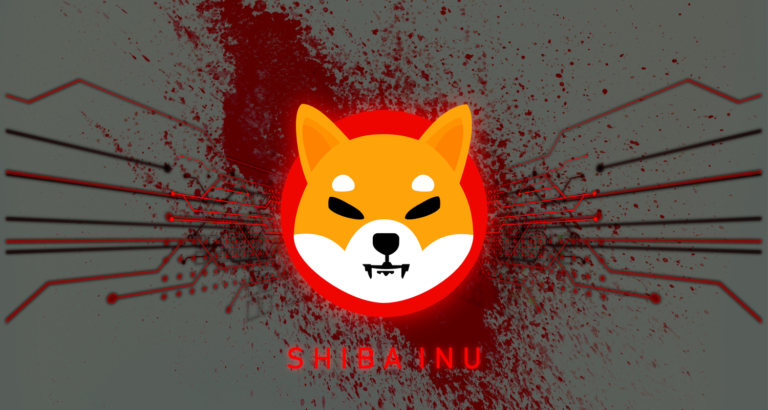Stablecoins refers to one branch of cryptocurrencies characterized by price stability. As you may already know, the existing cryptocurrencies are known for having highly fluctuating prices, and many people do not enjoy this feature. Recently, stablecoins became highly popular on the market since their values depend on another asset, and they are stable. In fact, the stablecoin market is now worth around 150 billion USD, which is a pretty good number. Today, we are here to share with you the top stablecoins you need to look out for.
KEY TAKEAWAYS
- Stablecoins are one type of cryptocurrency in which their value of them is pegged to an external resource like fiat currencies or commodities.
- There can be different external resources pegged to stablecoins, such as USD, gold, silver, etc.
- The ruling principle of stablecoins that makes them “stable” is collateralization or different algorithms used.
- A stablecoin can be launched in different Blockchain systems.
- The largest stablecoin in terms of market capitalization value is currently Tether (USDT).
Table of Contents
Tether (USDT)
- Market value: 1 USD
- 24-hour trade volume: $38,228,325,794
- Circulating supply: 81.98B
- Market cap: $82,012,356,358.07
Tether is the first stablecoin that entered the market back in 2014, and to this day, it is still the most popular one. It is the largest stablecoin market available now. Tether is based on USD, which makes it a fiat-based stablecoin. What that means is that the “stable” price of Tether is 1 USD. In other words, it is possible to exchange Tether you own for 1 USD at any time, although it is possible to have some minor fluctuations over time.
In 2021, Tether was accused of lacking transparency within the network, and the official Twitter page of Tether blocking many people who are asking for transparency and audits within the Tether network was a discussion topic for people involved. However, it seems like the manipulation over the network is not likely to happen when the situation is considered.

Binance USD (BUSD)
- Market value: 0.99 USD
- 24-hour trade volume: 7.13B
- Circulating supply: 17,751,233,392 BUSD
- Market cap: 17,446,321,993.89 USD
Another highly popular and fiat-based stablecoin is Binance USD, as known as BUSD. It was launched in 2019, and it works with an audition method. That is, there is a limited dollar supply within the network, and those are audited every month. As you can infer from the name, Binance owns this stablecoin. As a result, users can trade on BUSD on Binance without paying any fees. In the 2020 summer, BUSD was green-listed by the Financial Services of NY, which further increased the trust for this stablecoin.
DAI
- Market value: 0.99 USD
- 24-hour trade volume: 344,156,055.43
- Circulating supply: 9,635,604,105 DAI
- Market cap: 9,631,332,010.53
DAI is another stablecoin that runs on the Ethereum network, and it is a decentralized stable cryptocurrency. In other words, DAI is not supported by USD on centralized bank accounts. Instead, DAI is supported by the Maker platform.
Recently, DAI has been on the decline, but with the nature of stablecoins, the difference is not that fluctuating. You can see the graph of DAI fluctuation between April 2018 and December 2021 here:
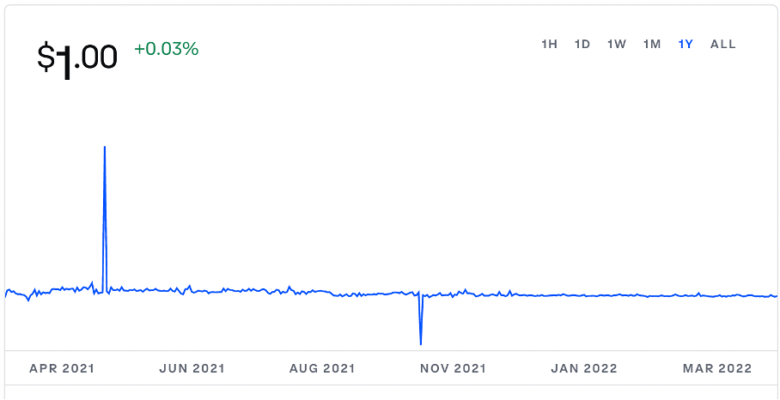
The peak here is 1.03 USD, and the lowest point is 0.99 USD.
Recently, DAI’s name has been associated with the abuse of a DeFi protocol. The derivatives platform Deus was hacked, and they lost roughly $3 million dollars ’ worth of Ethereum and DAI, as per a Twitter post released by the security company Peckshield.
TerraUSD / UST
- Market value: 1 USD
- 24-hour trade volume: 519,564,686.85 USD
- Circulating supply: 16,419,550,370 UST
- Market cap: 16,437,961,435.78
TerraUSD runs within the Terra system, and it is a stablecoin based on Terra’s native token, LUNA. In other words, the algorithm of UST allows it to be in equilibrium depending on LUNA. The asset can be practical for trading and making payments. Moreover, it is also used to generate passive income or get passive rewards through the depositing system. The latter opportunity is made possible by decentralized finance services and Anchor protocols.
At the end of 2021, the Terra community decided to give up around 89 million LUNA to mint around four to five million UST. The main aim of this move was to develop the Ozone insurance protocol further. This move led to an increase in the value of LUNA.
The following is a graph showing the fluctuation of UST in the scope of a year:
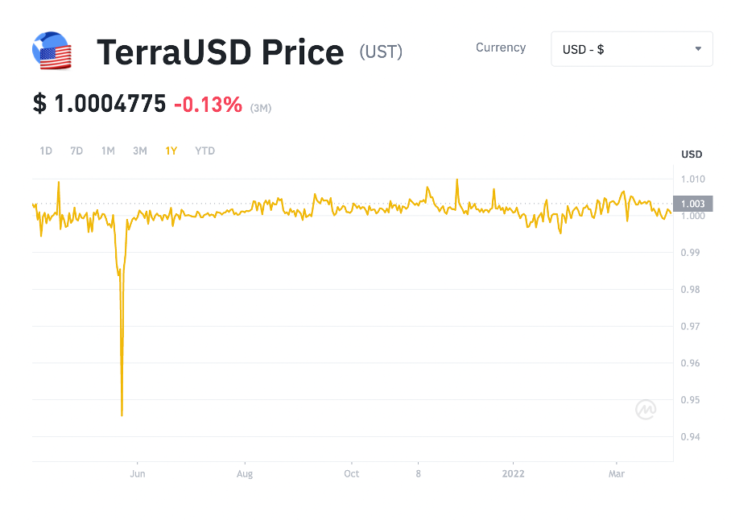
USD Coin / USDC
- Market value: 0.99 USD
- 24-hour trade volume: 5,149,594,114 USD
- Circulating supply: 51.40B
- Market cap: 51.381B
USD Coin is owned by the partnership of Coinbase Global. And Bitmain Technologies is based on USD. In terms of market cap, USD Coin takes up space as the second-largest stable coin available in the market. Grant Thornton LLP, a well-known financial company, validates USDC resources on a regular basis.
Very recently, the Circle (the operator of USDC) announced that its reserves of it would be guarded by BNY Mellon, which is a financial institution. Since BNY Mellon is one of the most rooted financial institutions in America, this news brought quite an attention to the stablecoin.
Digix Gold Token (DGX)
- Market value: 136 USD
- 24-hour trade volume: 2,227.04
- Circulating supply: 54,623 DGX
- Market cap: 16.29B
As you can understand from the features we shared with you, DGX is a little bit different from other stablecoins we have mentioned up to now. The market value is not 1 USD like many other stablecoins, which increases the risk rating assigned to it. As you can see from the graph above, the price of it is relatively more fluctuating:
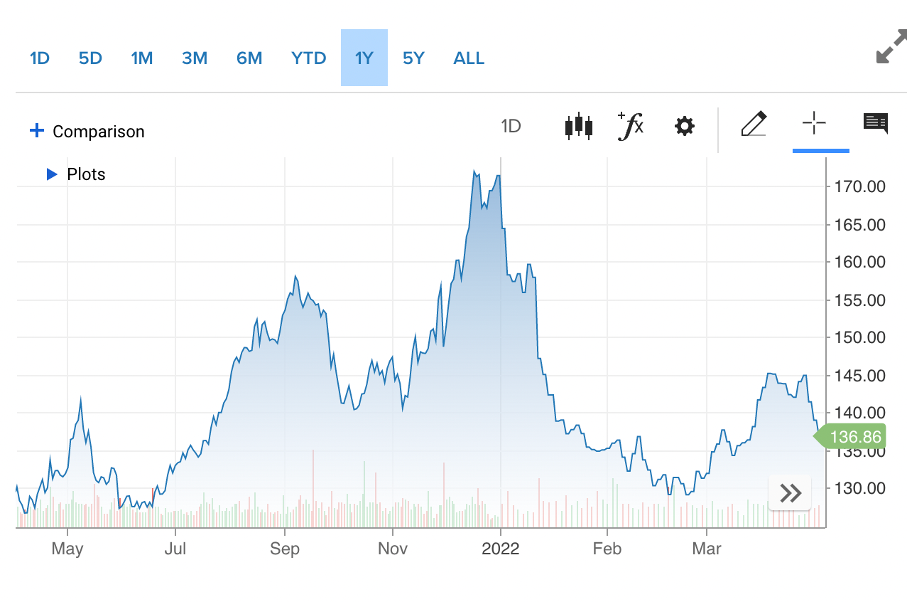
The DGX describes itself as a “medium-risk” coin. That means, although there are some fluctuations, the risk is not considered as high as non-stable cryptocurrencies.
A major difference between DGX and other stablecoins we have discussed is that, instead of being pegged to a fiat currency, it is pegged to gold, which explains the relatively high fluctuations. So, as the price of one gram of gold is changed, does the price of DGX.
TrueUSD (TUSD)
- Market value: 0.99 USD
- 24-hour trade volume: 174.44M USD
- Trade to value ratio: 10.8%
- Circulating supply: 81.98B USD
- Market cap: 1,354,621,806.03
TrueUSD is another stablecoin that runs on the Ethereum network, and its price of it is based on fiat currency, USD. The platform describes this stablecoin as the “first regulated stablecoin fully backed by the US dollar,” which perfectly explains it. The supply of TUSD depends on the USD they hold within the platform. The coin is also collaborating with a bank for digital payment purposes. The protocol offers relatively lower transaction fees than the market average, with higher interest rates in the stored balances.
Neutrino USD
- Market value: 0.99 USD
- 24-hour trade volume: 174.44M USD
- Trade to value ratio: 10.8%
- Circulating supply: 81.98B USD
- Market cap: 1,354,621,806.03
Another stable coin based on USD is Neutrino USD, and it is categorized as an algorithm-based crypto-collateralized currency. The protocol is constituted through interacting smart contracts, and it is written through Ride, which is a programming language. The system consists of three tokens, named USDN, Waves, and NSBT, Waves being the core token within its Waves Blockchain system. USDN is pegged to USD, and it takes place as the stablecoin. It is used to back up other Neutrino stable assets. The Neutrino system’s NSBT token is a recapitalization and controls currency that preserves the USDN collateral resources’ stability. Some of the applications of Neutrino USD involve staking, issuance, and collateralization.
TRIBE (FEI)
- Market value: 0.528 USD
- 24-hour trade volume: 22,073, 328 USD
- Circulating supply: 453.4M TRIBE
- Market cap: 244.7M USD
TRIBE is a stablecoin that takes place within the Ethereum network, and it governs the Fei protocol. Fei protocol uses a decentralized and separate stablecoin named FEI, which aims to have a stable value of 1 USD. In other words, TRIBE is the governance token of this protocol, and FEI is the stablecoin. This protocol algorithmically assigns tokens within protocol controlled value (PCV) in order to generate income and offer liquidity. Since the protocol is based on entirely non-centralized cryptocurrencies, it claims to be fully decentralized. Currently, TRIBE is supported in the US, NY, CAN, EU, UK, DE, IE, and SG regions; but the platforms used in each region may depend. Currently, TRIBE is ranked 169. order according to its market cap.
Pax Dollar (PAX / USDP)
- Market value: 1 USD
- 24-hour trade volume: 10.99M USD
- Circulating supply: 945.6M GUSD
- Market cap: 946.7M USD
Another USD-based stablecoin is PAX, and it runs in the Ethereum Blockchain system. The main aim of PAX was to resolve the Tether printing controversy. Moreover, PAX is under strict regulation by the New York State Department of Financial Services. The PAX reserves are maintained as cash or cash equivalents to maintain safety for the customers. The protocol claims to offer a service that is “unrestricted by the limits of traditional banking.”
At the end of 2021, Stephanie Kasrael, who is Novi’s (Novi is a wallet that uses Pax Dollar mainly) incoming leader, announced that they are working on a new feature on WhatsApp, where users will be able to send money to each other within the app directly. These Novi/Paxos transactions seem to bring something never heard to the cryptocurrency market.
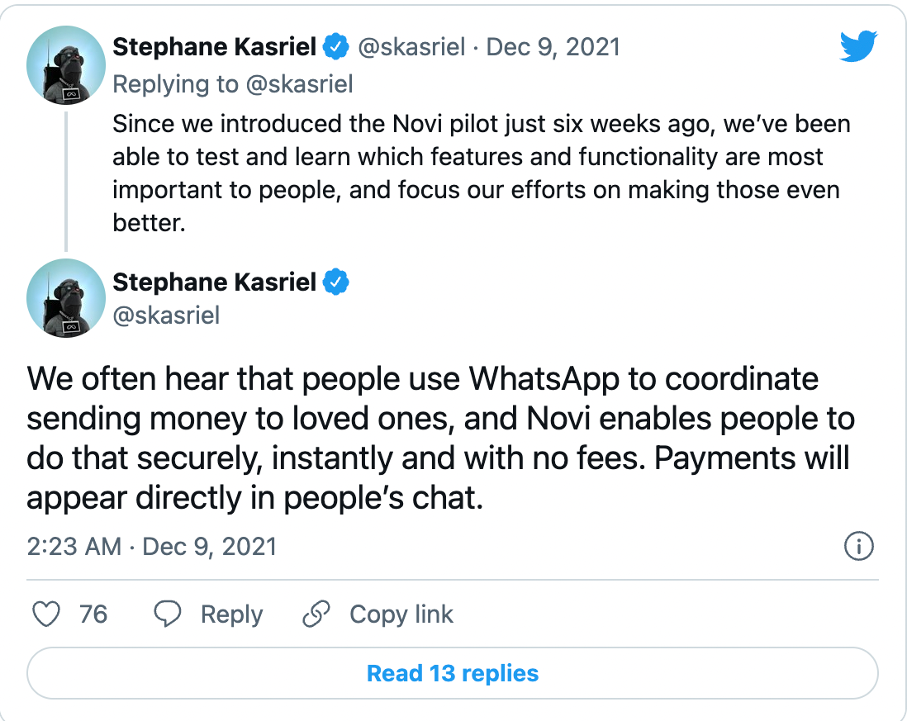
Havven’s Nomin (NUSD)
Havven is a payment network, and for a couple of years now, they have been planning to launch a stablecoin which is pegged into USD. The system will use paired coin principle, in which there are two related cryptocurrencies; one absorbs the price fluctuations for both of them to maintain the other one stable. In this case, Havven is the fluctuating coin, whereas Nomin is the stablecoin. This stablecoin is based on Havven’s escrow technology, and Havven users can get NUSD by placing ETH or Ether in the escrow. In other words, those that have deposited ETH in custody will receive the ETH produced via NUSD fees.
Nomins will be used for payments and purchases, and each transaction will include a fee. This fee will be distributed through Havven token holders. Every Havven holder will earn Nomins, and the more Havven holds one person, the more Nomin they will earn. As more people become a part of the network, Havven will become more valuable.
Palladium Coin
- Market value: 0.0000033
- 24-hour trade volume: 639.81 USD
- Circulating supply: no data
- Market cap: unknown
Palladium is a commodity-backed stablecoin, and it takes place in the Ethereum network. The value of the Palladium coin is pegged to the value of the chemical element, Palladium. Palladium Coin is popular among anonymous asset purchases since the protocol favours such purchases. It is also possible to get Palladium ownership, but it is fractional ownership.
Palladium is considered to be one of the most promising stablecoins on the market since it brings a solution to the traditional setback in owning Palladium (from the restrictions of owning fractional amounts). Thus, Palladium Coin can provide a more sustainable and flexible way of investing in precious metals while determining the scope of future plans.
Gemini Dollar
- Market value: 0.99 USD
- 24-hour trade volume: 5,184,392.52 USD
- Circulating supply: 190.4M GUSD
- Market cap: 185.2M USD
Gemini Dollar (GUSD) is pegged into USD, and it is one of the pioneers of USD-pegged stablecoins in the market. It claims to offer promoted transparency and regulatory requirements within the traditional fiat currency-based financial systems. The GUSD operations are regulated by the New York State Department of Financial Services. The network makes use of a centralized system to enhance security against threats.
Since GUSD is examined by an independent firm each month, it is ensured that there is parity between the USD reserves in hand and GUSD circulation. Anyone can view GUSD transaction history and other data from Ethereum network block explorers. Although the main platform for Gemini Dollar is the Gemini exchange, the currency is available on different cryptocurrency platforms as well.
Recently, Gemini announced that they are joining Coinbase and Block at the Crypto Council for Innovation. That means Gemini, from now on, will be on the list of “crypto-friendly firms.” We still don’t know how this will influence the Gemini Dollar, but it sure looks exciting.

FRAX
- Market value: 0.99 USD
- 24-hour trade volume: 69.84 M
- Circulating supply: 2.70B FRAX
- Market cap: 2,694,439,410 USD
Frax Finance is an algorithmic stablecoin, and it runs by FRAX currency; and it has the feature of being the first fractional-algorithmic stablecoin. The protocol runs on a two-token system, including one stablecoin (FRAX) and Frax shares (FXS). To keep the market value of FRAX stable, FXS is purchased and sold FXS regularly and colletarized by USDC. The main goal of this protocol is to innovate the existing fixed-supply digital assets and to provide highly scalable, algorithmic, and decentralized money. It is considered to be a futuristic protocol since it combines many different concepts that have never been brought together earlier. Those concepts include:
- Fractional-algorithmic
- Decentralized and governance-minimized
- Fully on-chain oracles
- Two token system
- Crypto native CPI
The platform aims to enhance the scope of assets that support FRAX by including other currencies and having interest-generating tokens in addition to traditional asset loans. FRAX intends to purchase layer one blockchain native tokens that underpin the FRAX stablecoin as reserving collateral.
Liquity USD
- Market value: 1 USD
- 24-hour trade volume: 2,580,826.64 USD
- Circulating supply: 719M LUSD
- Market cap: 720M USD
Liquity, or Liquity USD, is another stablecoin that entered the market with a promise to resolve some pain points. In this case, Liquity is the name of the protocol, and LUSD is the stablecoin. There is also a secondary token named LQTY. The protocol aims to create capital-efficient and user-friendly methods of borrowing stablecoins, and it is governance-free and decentralized. The problem Liquity tries to solve is mainly about the fact that a good majority of the available stablecoins are centralized.
The protocol enables to get loans that are interest-free against Ether. This feature is quite interesting since a 0% interest rate is not something common. The loans are paid through LUSD, and it is necessary to maintain a minimum collateral ratio (110%). This would allow using deposited ETH more efficiently.
The use cases of Liquity differ. One of the most common examples would be borrowing LUSD, and ETH is the only collateral accepted for borrowing. It is also possible to get rewards by providing LUSD to the stability pool.
Recently, Forta, a decentralized protocol used for runtime security for crypto teams, announced that Liquity is starting to use Forta within the scope of their protocol. That means that Liquity, from now on, will benefit from Forta’s features, which include getting notified as soon as an unforeseen system behavior occurs. This will allow them to quickly assess what is going on without losing time and take appropriate action if necessary.

HUSD
- Market value: 0.99 USD
- 24-hour trade volume: 19,192,445.51 USD
- Circulating supply: 400M HUSD
- Market cap: 401M USD
HUSD is a stablecoin, which combines the benefits of trading by assets based on Blockchain and reducing price risks. HUSD is classified as ERC-20 tokens in the Ethereum network. When HUSD first launched, the aim was to bring a solution by combining four different stablecoins into one that can be used in the Huobi exchange platform. In other words, a way of depositing and withdrawing using any of those four stablecoins in the Huobi platform was aimed – and all of them would appear as HUSD.
Yet, users didn’t want to prefer this method because of transparency concerns, and at that time, some issues about Tether were popular. Hence, the platform decided to have an independent coin.
HUSD is decentralized and claims to have a high level of security. There are over 20 platforms that support HUSD.
Reserve Rights
- Market value: 0.99 USD
- 24-hour trade volume: 72,223 USD
- Circulating supply: 28,850,667 RSV
- Market cap: 1.03M USD
Reserve Rights is another stablecoin, and it takes place as the governance token of the Reserve network on the Ethereum Blockchain. This token can be used to vote or decline suggestions. As a result of these votes, the regulatory body’s method of governance is defined. The protocol runs on a two-token system, including RSV (reserve stablecoin) and RSR (reserve rights token).
The token is pegged into USD and has a different way of maintaining this value. When the token’s value gets lower than 1 USD, the protocol automatically purchases more RSV, and thus the price goes back to 1 USD. If its value goes above 1 USD, the protocol sells RSV until it becomes 1 USD again. All of those are possible through the use of smart contracts.
USDX
- Market value: 0.96 USD
- 24-hour trade volume: 227,792.25 USD
- Circulating supply: 172,505,662 USDX
- Market cap: 166M USD
USDX is another stablecoin pegged into USD, and this stability is maintained through a smart contract. The smart contract assures price stability. The platform also offers a wallet named USDX Wallet, which facilitates the trading and storing processes in a great manner. It is possible to purchase USDX with more than 50 cryptocurrencies, including but not limited to Bitcoin and Ethereum.
XSGD
- Market value: 0.73 USD
- 24-hour trade volume: 1.3M USD
- Circulating supply: 212,202,228 XSGD
- Market cap: 155M USD
XSGD is a stablecoin that runs in Zilliqa and Ethereum Blockchains, and it is pegged to the Singapore dollar. XGSD is under the regulatory compliance of a Major Payment Institution named Xfers. The XSGD reserves are fully backed with Singapore Dollar, meaning that every single XSGD out there is safeguarded in a Singapore bank. The transactions are said to be high on speed, scalable, and cost-efficient. It is possible to send Singapore Dollar in the system, and such transactions occur almost instantly with relatively low fees and with no need for a 3rd party involvement.
XGSD can be used to complete payments, hold assets, trade, lend, and borrow. For now, the only available trading pair is for XSGD / SGD. It is also possible to use XSGD as collateral in margin trading and derivatives.
STATIS EURO (EURS)
- Market value: 1.08 USD
- 24-hour trade volume: 10,582,980.12 USD
- Circulating supply: 124,125,940 EURS
- Market cap: 133M USD
EURS is a stablecoin pegged into Euro, and its goal is to provide flexibility while not getting stuck to the single-layer solutions and ending up with inefficiencies. Currently, EURS is the largest Euro-based digital asset available in the market. It is supported by extinguishing systems and applications, including liquidity providers, exchanges, payments, and custodians. With EURS, there is no need to pay GAS fees within transactions – yet users still need to pay transaction fees with any other digital asset that is backed by the wallet of EURS, STATIS.
At the beginning of April, Wirex conducted a EURS giveaway on their Twitter account, in which the winner got EURS worth 300 Euros. If you want to keep in touch about such giveaways, you should definitely follow the EURS Twitter account.

Origin Dollar (OUSD)
- Market value: 0.99 USD
- 24-hour trade volume: 717,681.41 USD
- Circulating supply: 143,850,204.247 OUSD
- Market cap: 98.90M USD
Origin Dollar, as known as OUSD, is another stablecoin that runs in the Ethereum network. The distinguishing feature of this stablecoin is that it has the feature of automatically earning yields through DeFi protocols. There is no need for staking or lockups to be a part of profitable DeFi strategies. This way, users can save from gas fees and eases the process of switching between spending and earning. In other words, your profits increase over time and are represented in your growing OUSD balance, which you may use for payments, trade, and peer-to-peer transactions.
Returns are distributed according to the units of OUSD, which claims owned OUSD to grow faster than USD units in the traditional savings accounts. OUSD is backed by other stablecoins, including USDC, DAI, and USDT. The platform allows to earn and store OUSD through non-custodial Ethereum wallets, which gives great flexibility and control. No minimum holding period or amount is involved. You may prefer to protect the OUSD you hold through smart contract insurance by Nexus Mutual and InsurAce.
Celo Dollar
- Market value: 0.99 USD
- 24-hour trade volume: 232,502.02 USD
- Circulating supply: 76,640,704 CUSD
- Market cap: 76M USD
Celo Dollar is one of two native tokens of the Celo platform. The platform runs on the dual-token system, in which CELO is the governance token and cUSD (Celo Dollar) is the stablecoin pegged on USD. cUSD offers great transparency in crypto transactions and provides security against votality of assets.
To keep cUSD equal to one USD, the platform uses a programmatic reserve system, which can be defined as an overcollateralized reserve. As cUSD’s price fluctuates in this system, the system sells or purchases cUSD to make the value increase or decrease. Celo aims to create more stablecoins pegged into different fiat currencies.
bitCNY
- Market value: 0.15 USD
- 24-hour trade volume: 250,740.64 USD
- Circulating supply: 28.25M USD
- Market cap: 4.4M USD
bitCNY is another stablecoin, but it is pegged on the Chinese Yuan. It has a consensus mechanism named Delegated Proof-of-Stake, as known as dPoS. It is based on the Bitshares blockchain. The bitCNY token reflects the quantity of BitShares (BTS) that correspond to one Chinese Yuan as a market tied asset. The demand for bitCNY comes from people who want close purchasing power with the Chinese Yuan and the ability to maintain transactions.
EOSDT
- Market value: 0.95 USD
- 24-hour trade volume: no data
- Circulating supply: 2,642,505
- Market cap: 2.73M USD
EOSDT is a stablecoin within the EOS Blockchain system, and it is built through the DeFi smart contracts named Equilibrium. It is pegged into USD. The protocol allows high-speed, scalable, low fees transactions. EOSDT is claimed to be special because it is safe, stable, and transparent all at once. The technology of the protocol is based on decentralized governance, agile and accessible liquidation, and reliable price feeds. EOSDT is available in different exchange platforms, including but not limited to YOLO, FINDEX, Changelly, and wallets such as Huobi Wallet, Keycat, PAYTOMAT, and NOVA Wallet.
sUSD
- Market value: 0.99 USD
- 24-hour trade volume: 82,128,258 USD
- Circulating supply: 124,029,843 SUSD
- Market cap: 123M USD
sUSD is a stablecoin, formerly known as nUSD, and it takes place in the Synthetix platform and is classified as a synthetic stablecoin. It is possible to mint sUSD through staking SNX, and sUSD can be used in Synthetix for different purposes, including trading.
Within the Synthetix protocol, sUSD has a role for “debt obligation.” That means users will have a proportion from the debt pool that is tied to all the synthetic assets as they mint sUSD. This enables the supply of sUSD to depend on the minting processes and demand for minting and owning in the Synthetix platform. Because users may arbitrage their sUSD tokens for other synthetic assets in the debt pool, the price of the sUSD token holds stable.
VAI
- Market value: 0.92 USD
- 24-hour trade volume: 57,529.63 USD
- Circulating supply: 57,498,554 VAI
- Market cap: no data
VAI is a stablecoin that takes place in the Venus protocol, and it is built on Binance Smart Chain. It is supported by different stablecoins and crypto assets, and it is decentralized. The main goal of the Venus protocol is to provide a service characterized by low fees and high speed through the native crypto. The following are some of the use cases of VAI:
- Earning interest: You can earn interest through VAI by depositing VAI in Venus Vault and then participating in the Venus liquidity program.
- Participating in governance
- Over-collateralized minting
- Supplying or borrowing assets
Steem Dollars (SBD)
- Market value: 4.45 USD
- 24-hour trade volume: 2,309,462 USD
- Circulating supply: 11,012,906 SBD
- Market cap: 48,897,845 USD
Steem Dollars is a stablecoin pegged into USD. In November 2017, something extraordinary happened, and the price of it increased to 13 USD, yet this is fixed now, and the price is revolving around 1.07 USD. About half of the payments made to curators and creators on Steemit are conducted through SBD to protect the price against fluctuations. It is also possible to trade SBD into different exchanges.
mStable USD
- Market value: 1 USD
- 24-hour trade volume: 368,282.19 USD
- Circulating supply: 41.09M mStable USD
- Market cap: 41.09M
mStable USD runs on the Ethereum network, and it is pegged to USD. Unlike mainstream stablecoins, mStable does not have a system where US dollars in a bank account back the token. Instead, the system uses other stablecoins as back deposit collateral on the mStable protocol.
Rupiah Token (IDRT)
- Market value: 0.000069 USD
- 24-hour trade volume: 438,331.07 USD
- Circulating supply: 215,347,997,094 IDRT
- Market cap: 15,043,811.28 USD
Rupiah Token is a stablecoin that runs on the Ethereum and Binance chains, and it is pegged into the Indonesian Rupiah. It is the first stablecoin pegged into the Indonesian Rupiah. The smart contract used in this token is audited by CertiK, which further provides security evidence. It is possible to observe the benefits of the Ethereum network, including scalability, transparency, and high speed, since it takes place within that network.
The goal of IDRT is to provide Indonesian cryptocurrency market users with a safe and reliable way to conduct their transactions while decreasing the votality risks available in the market. Users can also benefit from IDRT by holding their assets in their local currency.
USDK
- Market value: 0.99 USD
- 24-hour trade volume: 62,825,228.22 USD
- Circulating supply: 28,600,072 USDK
- Market cap: 28,494,968.48 USD
USDK is a stablecoin within the OKEx platform that tries to provide transparency, security, and reliability to its users, and it is pegged to USD. The platform claims to bring some solutions to the cryptocurrency market, especially about the votality. Since no third-party auditing is excluded, transparency is also maintained.
USDK takes place on OKEx’s platform, and it is possible to trade OKEx against six different fiat currencies. Since the monetary value is 100% reserved, a 1:1 conversion rate between USD and USDK is guaranteed.
Qcash
- Market value: 0.138376 USD
- 24-hour trade volume: 87,197,669 USD
- Circulating supply: 460M QC
- Market cap: 63.6M USD
Qcash is a stablecoin pegged to the Chinese Yuan. The main purpose of launching this stablecoin was to develop a digital currency that can be used as the Chinese Yuan, some sort of “digital Chinese Yuan.” Currently, Qcash supports a variety of fiat and cryptocurrencies, including but not limited to USD, CNY, and ETH for trading pair options. The protocol that Qcash runs in low-risk trading and stable currency backed lending.
What Makes a Stablecoin Good?
Before we start to tell you about the top stablecoins on the market, let’s briefly look at which aspects we will evaluate them. There are four main concepts that we will focus on today, which happen to be:
- Market value refers to the price of the asset.
- 24-hour trade volume refers to the sum of the traded value in the past 24 hours. Although it is updated daily, it can give you a general idea about it. You can also check the current trade volume of the stablecoins we mention here.
- Circulating supply refers to the number of coins available for trading, which is also updated frequently but still can give you an idea.
- Market cap refers to the multiplication of supply and the current price, and a high market cap is a sign of high value assigned to the asset.
Before moving on, you can learn more about other cryptocurrencies & altcoins.
What is a stablecoin?
Stablecoins are a branch of cryptocurrencies, and they are designed to have “stable” prices, unlike other cryptocurrencies. They are frequently used for payments, exchanging cryptocurrencies, and preserving the fiat value of the assets users hold.
What is the best stablecoin?
There are many different stablecoins available in the market, and they have different features that make them good. Currently, the most popular and largest stablecoin is Tether. Other popular stablecoins include Binance USD, TerraUSD, and DAI.
How much is stablecoin worth?
Different stablecoins have different values. While stablecoins pegged on USD worth 1 USD, other ones pegged into different assets (such as DGX, which is worth 1 gram of gold) have different values.
Is stablecoin a good investment?
Stablecoins are a type of cryptocurrency, and although they are not typically viewed as a good investment means, there can be some cases where they are good investment ideas. They’re typically viewed as means to digital transactions and convert crypto assets into and out of fiat money.



